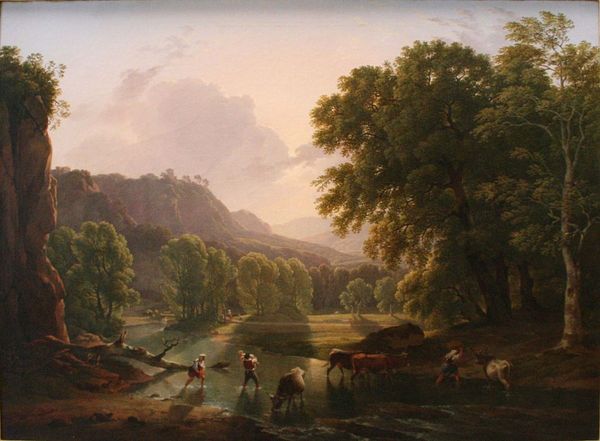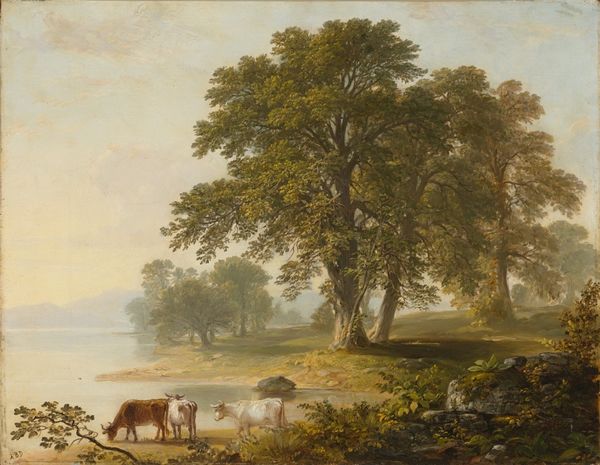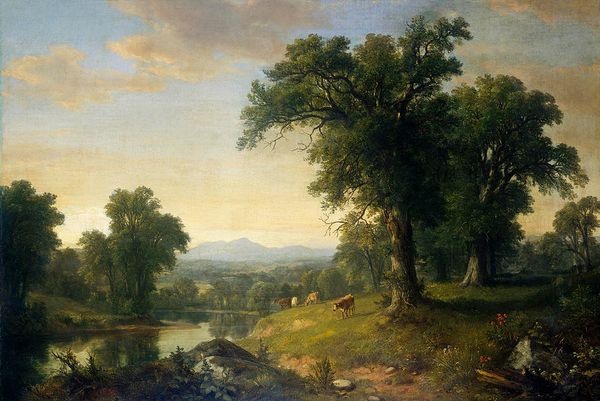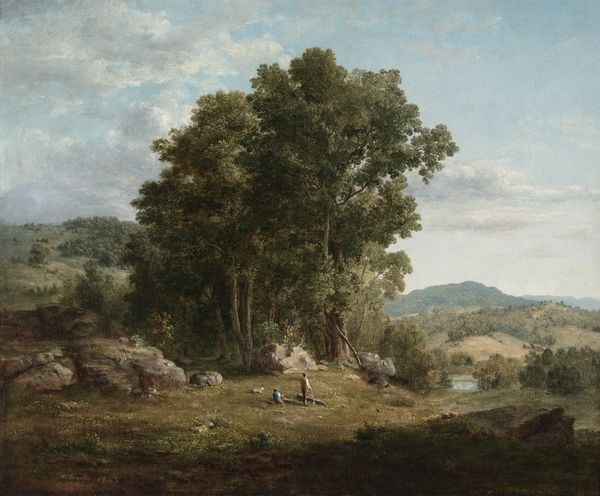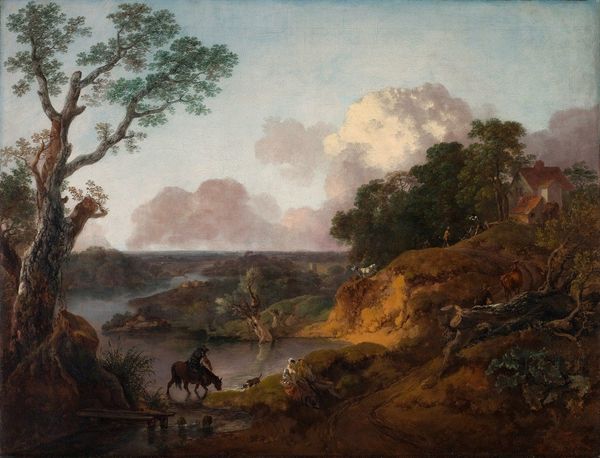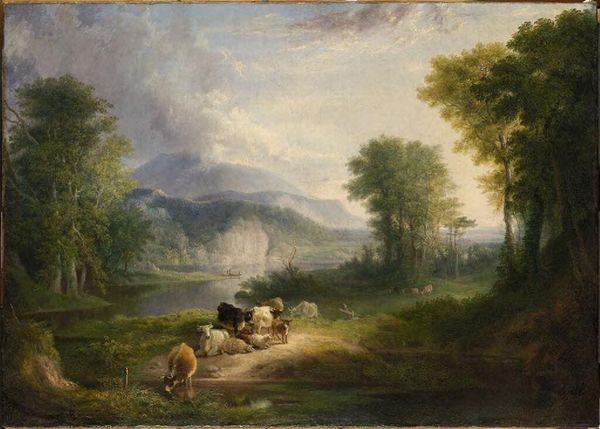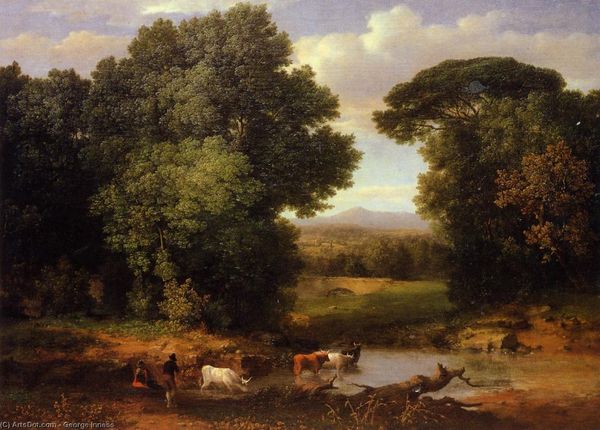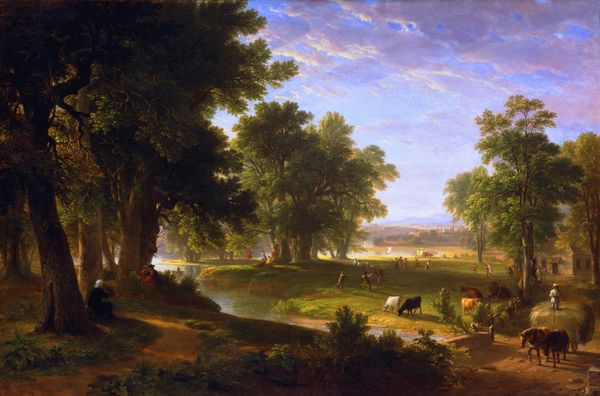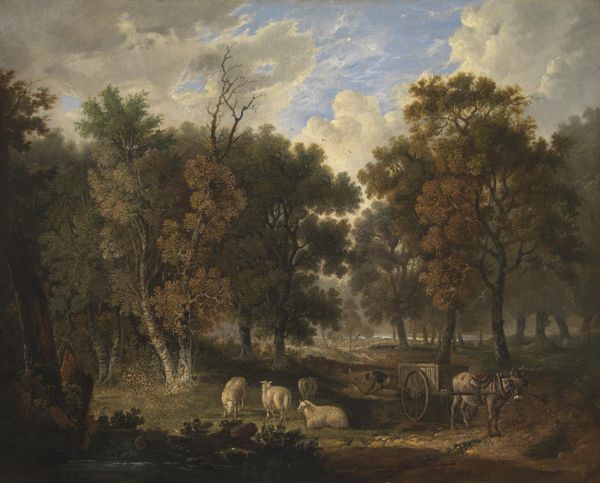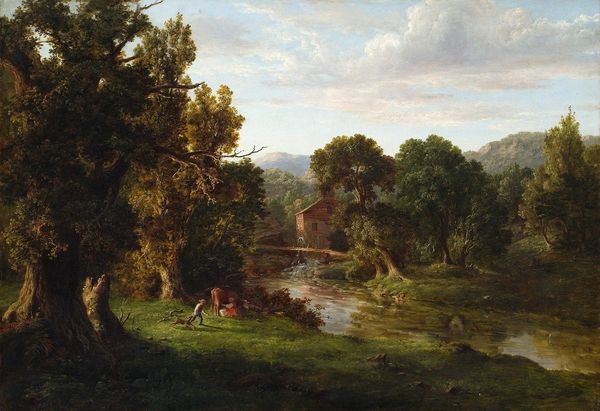
painting, oil-paint
#
painting
#
oil-paint
#
landscape
#
figuration
#
nature
#
romanticism
#
hudson-river-school
#
genre-painting
#
realism
Copyright: Public Domain: Artvee
Curator: Let's take a moment with George Inness's "Crossing the Ford," an oil on canvas completed in 1848. It’s a fairly classic example of the Hudson River School's earlier phase. Editor: It evokes such a quiet stillness. The light, particularly. The soft golds and blues—there's an idyllic serenity, isn’t there? A nostalgia almost baked into the brushstrokes. Curator: Inness, at this stage, was deeply influenced by the prevailing romantic idealism of the time. Notice the carefully constructed scene. It's more than just a depiction of nature; it’s a statement about man's harmonious place within the landscape. Editor: I find myself questioning that harmony. While beautiful, isn't it also presenting a sanitized version of rural life? Whose labor is missing from this picture, who's conveniently excluded to maintain this serene fiction? Curator: It's important to remember the historical context. Inness was painting during a period of intense social and economic transformation. Industrialization was rapidly changing the American landscape. The Hudson River School, in many ways, offered a refuge from that, a visual counterpoint. Editor: A retreat into an imagined past, perhaps? While simultaneously perpetuating a specific narrative about American identity—one that often marginalizes other voices and realities. The symbolism of that crossing, that act of traversal through water...it's loaded, isn’t it? Curator: Absolutely. The act of crossing itself represents transition, passage, the journey into the unknown. Consider also the way the artist uses light to guide the viewer's eye, emphasizing certain elements of the composition and obscuring others. The framing of the mountains is superb. Editor: That obscuring is exactly what piques my interest. What lies in those shadows, beyond the picturesque? Whose story remains untold? How might a contemporary viewer unpack these visual silences? Curator: The interplay between romanticism and a budding realism creates an undeniable tension. These early works gave Inness the standing and income that then afforded him the room to express the socio-economic injustices he later came to focus on in his art. Editor: It makes the piece all the more poignant, understanding Inness’ artistic journey in context. A painting like this, seemingly straightforward, can unlock fascinating dialogues about history, representation, and power.
Comments
No comments
Be the first to comment and join the conversation on the ultimate creative platform.
